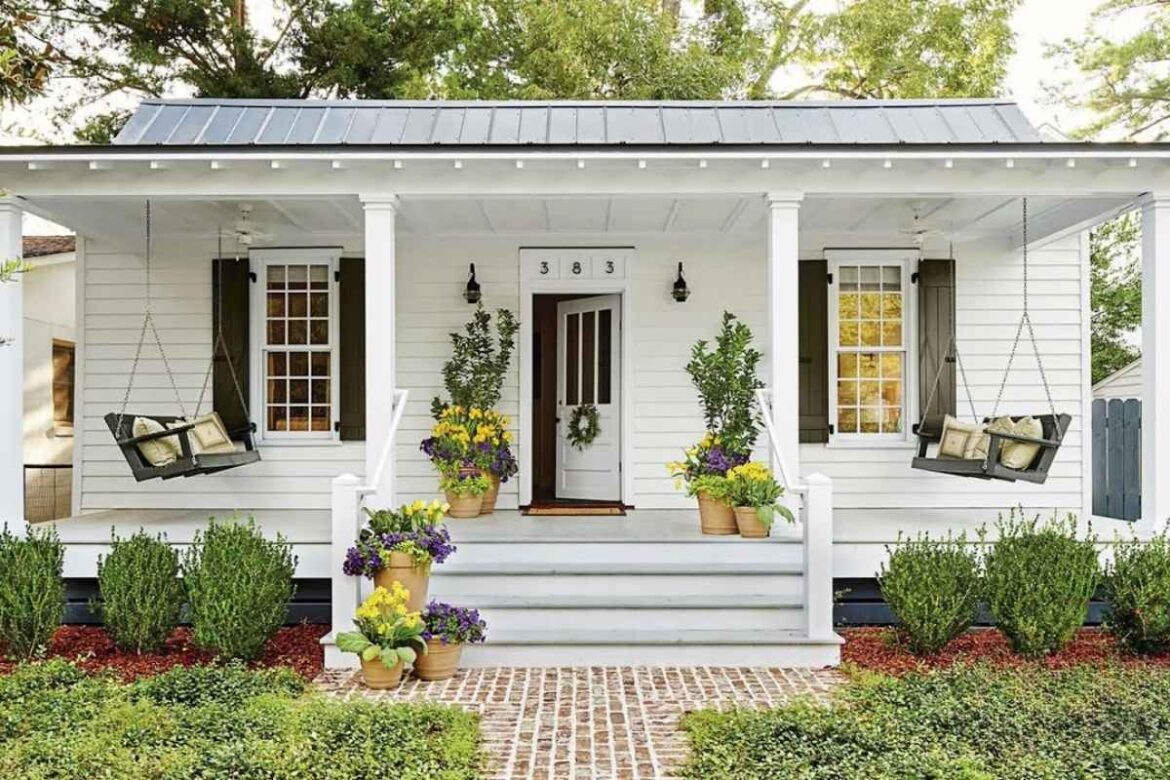
The tiny‑house movement began as a fringe rebellion against ballooning mortgages, yet it has matured into a fully fledged market segment served by architects, modular builders and interior brands.
Whether carved out of a converted mill loft or craned into a suburban back‑garden plot, homes under 40 m² challenge conventional building‑services wisdom: a single steamy shower can push humidity past mould‑growth thresholds; one poorly placed LED strip can heat a corner enough to trigger condensation on the opposite wall.
While small-scale living reduces material use, it magnifies the impact of micro‑climate swings on occupant comfort and the building fabric.
Contents
- 1 Construction‑Grade Tech Finds a Domestic Audience
- 2 Installing in Minutes, Learning for Years
- 3 Beyond the Hygrometer: Data‑Driven Micro‑Design
- 4 Passive‑First Ventilation Gets a Digital Upgrade
- 5 Off‑Grid and Van‑Life Adaptations
- 6 Privacy by Architecture, Not Policy
- 7 ROI for Landlords and Lenders
- 8 DIY Maker Culture and Open APIs
- 9 The Road Ahead
Construction‑Grade Tech Finds a Domestic Audience
The sensors once buried in motorway viaducts are now small enough to hide behind skirting boards, robust enough to shrug off toddler tantrums and pet paws, and frugal enough to run for a decade without batteries.
The Helix embedded sensor harvests power from ambient electromagnetic fields—think Wi‑Fi routers and phone chargers—then uses the building’s reinforcement or timber studs as a giant antenna. That clever trick punches data through walls where consumer IoT gear drops packets, a crucial advantage when brick or insulated‑render facades dampen Bluetooth signals.
Installing in Minutes, Learning for Years
In a trial across 50 micro‑apartments in Bristol’s Old Market district, residents attached sensors with reusable nano‑gel pads—no drills, no lease‑violating screw holes. Onboarding via a QR code took less than two minutes. Over the next six weeks, the network collected 1.2 million data points on temperature, RH, surface moisture and CO₂.
Patterns emerged: weekend cooking marathons drove Sunday‑night humidity spikes; weekday absence let temperatures dip, lengthening the boiler’s recovery cycle and wasting gas. Armed with these insights, tenants tweaked routines—opening the bathroom window during hair‑drying, delaying laundry until the outside dew‑point dropped—and cut energy use by 17 percent month‑on‑month.
Beyond the Hygrometer: Data‑Driven Micro‑Design
Occupants often treat space planning as static, but sensor heatmaps reveal dynamic zones. A sleeper sofa folded against an external wall trapped moist air; moving it 30 cm unlocked airflow, shaving 3 percent off average RH.
Similarly, placing a ventilated shoe rack beneath the mezzanine ladder balanced convection currents, evening temperatures within 1 °C across the living volume. These micro‑interventions cost pennies yet deliver comfort dividends impossible to guess by feel alone.
Passive‑First Ventilation Gets a Digital Upgrade
Retrofit tiny homes rarely justify the cost of MVHR systems. Instead, smart trickle vents—servo‑motor‑actuated and controlled by the sensor network—open only when indoor RH exceeds 65 percent and outdoor conditions can accept the load without energy penalties.
During a damp London autumn, this strategy halved window‑opening minutes compared with a fixed‑schedule rule, preserving warmth while flushing moisture.
Off‑Grid and Van‑Life Adaptations
Nomads renovating vans or narrowboats face condensation that corrodes metal skins. Helix nodes mounted with magnetic pads relay data to phones even in steel‑lined shells. When solar‑harvested power dips, the system throttles sampling to one reading every 30 minutes, stretching autonomy through cloudy spells. Users receive a nudge to crank a vent when surface moisture threatens rust, protecting both vehicle and valuables.
Privacy by Architecture, Not Policy
Because dwellings under 25 m² double as offices, gyms and bedrooms, data can become invasive. The platform solves this by processing raw readings locally, transmitting only anonymised metrics to the cloud. Tenant associations in a Sheffield co‑living scheme negotiated a clause that bars landlords from accessing room‑level data; they see only aggregate building trends, satisfied that mould is under control without monitoring individual showers.
ROI for Landlords and Lenders
Small‑unit landlords often bleed cash on reactive mould remediation—repainting, stripping carpets, compensating tenants. Sensor dashboards catch problems in the “invisible condensation” phase, before spores bloom.
One landlord with 120 studios in Manchester reported claims dropping from £450 per unit per annum to £70 after rollout, repaying hardware costs in nine months. Meanwhile, a green‑mortgage pilot shaved 30 basis points off interest once sensor‑verified energy savings hit 20 percent.
DIY Maker Culture and Open APIs
Tiny‑home owners are notorious tinkerers. The Helix ecosystem exposes REST endpoints, letting hobbyists script IFTTT workflows. Examples abound: flashing an RGB strip amber when RH exceeds 70 percent; firing a Home‑Assistant routine to delay the washer‑dryer until grid carbon intensity dips; or tweeting anonymised data to a #SmallSpaceStats community where enthusiasts compare comfort hacks.
The Road Ahead
Future firmware upgrades promise volatile‑organic‑compound sensing and acoustic monitoring to identify tenant‑disturbance hotspots. Developers are exploring laminated‑timber builds with sensors pre‑installed at the factory, turning each module into a data‑rich Lego block.
As planning authorities tighten overheating regulations, sensor evidence will grease approval for micro‑units, proving that even 18 m² can remain below 27 °C during heatwaves.
By shrinking the distance between cause and effect, construction‑grade sensors empower tiny‑house dwellers to master their micro‑climate, making compact living not merely feasible but enviably efficient.



